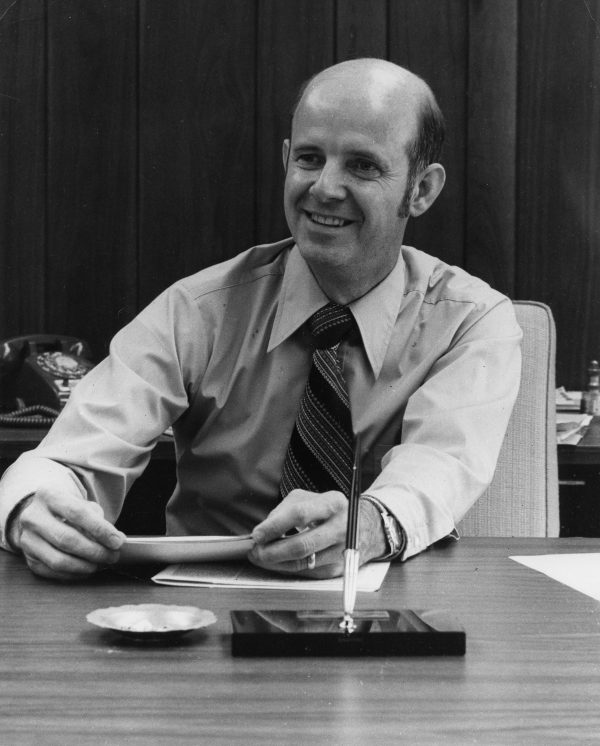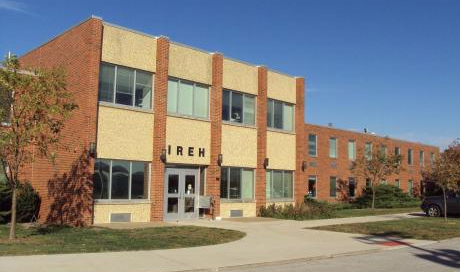Breadcrumb
Built on the shoulders of giants
By Kelley Donham
Published on June 22, 2016

The Institute of Agricultural Medicine was established in 1955 with a grant from the W.K. Kellogg Foundation to conduct rural health and safety research. The institute— the first of its kind in the world —was founded by Professors Franklin Top and Clyde Berry. Professor Emeritus Kelley Donham reflects on the importance of the institute and the groundbreaking work and leadership of its founders, including L.W. “Pete” Knapp Jr.
I often say that my career in agricultural medicine was built standing on the shoulders of giants. While some may regard this as a platitude, it has true meaning to me, realized even more with the passing of Pete Knapp in 2015.
Pete was one of the first faculty members hired in the late 1950s to form the Institute of Agricultural Medicine (IAM), now called the Institute for Rural and Environmental Health (IREH). The IAM was built within the UI College of Medicine’s Department of Preventive Medicine and Environmental Health, which became part of the College of Public Health in 1999. The IAM was a dynamic program that elevated the department to national and international status.
Pete was one of the giants who helped bring the IAM to its prominence. Born in 1925, Pete grew up on a farm outside of Ithaca, N.Y. He earned an MS degree in agricultural engineering from Cornell University. After graduating, he joined Cornell as a New York State Extension agricultural engineer and became a national leader in agricultural safety education for farmers.
Along with Pete, the first hires for the IAM included a veterinarian, microbiologist, toxicologist, family physician/clinical toxicologist, anthropologist, environmental scientist, and epidemiologist. These professionals worked together on identification and prevention of agricultural health and safety hazards.
I was a research assistant and graduate student in the IAM beginning in 1964, then moved on to further graduate work and military service. Pete was an important voice and mentor in my graduate years and early professional life. He recruited me back to the IAM in 1973.
Pete was an enthusiastic and genuine spokesperson for agricultural health and safety—and people listened. He was an early adopter (and the first in agricultural safety) to use the tools of epidemiology to identify and prevent agricultural injuries. He used his observations, findings, and engineering training to redesign the power take off shield on tractors to make them safer, and was instrumental in correcting an engineering fault in corn pickers that resulted in saving many farmers’ hands, arms, and lives.
 Pete was instrumental in gaining additional funding from the Kellogg Foundation to construct a comprehensive research facility for the institute that was completed in phases in 1968 and 1972. He was prominent in the design of the building (now called the IREH Building), particularly the Accident Prevention Laboratory. Pete served as director of the IAM from 1971 to 1988.
Pete was instrumental in gaining additional funding from the Kellogg Foundation to construct a comprehensive research facility for the institute that was completed in phases in 1968 and 1972. He was prominent in the design of the building (now called the IREH Building), particularly the Accident Prevention Laboratory. Pete served as director of the IAM from 1971 to 1988.
Pete not only improved the health and safety of farm people in Iowa and the U.S., but internationally, as well. He was a prime instigator and supporter of the International Association for Agricultural Medicine and Rural Health. This organization continues today, with members from North America, Europe, India, Japan, Korea, and beyond.
Pete was a special person to me and to his many other mentees and colleagues in the world of agricultural health and safety. He was a gentle giant in his field, and on his shoulders, many have stood.
This story originally appeared in the Spring 2016 issue of InSight